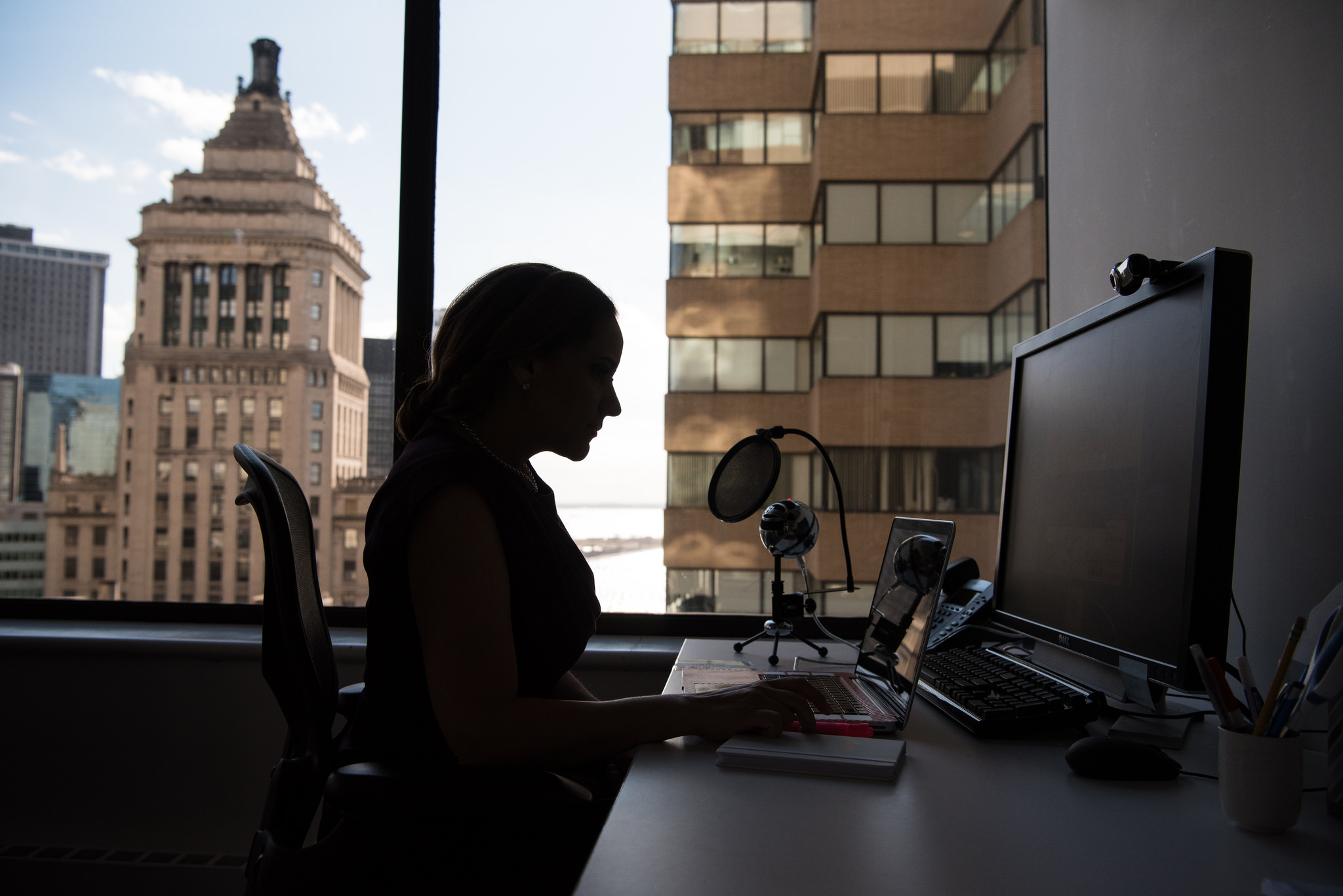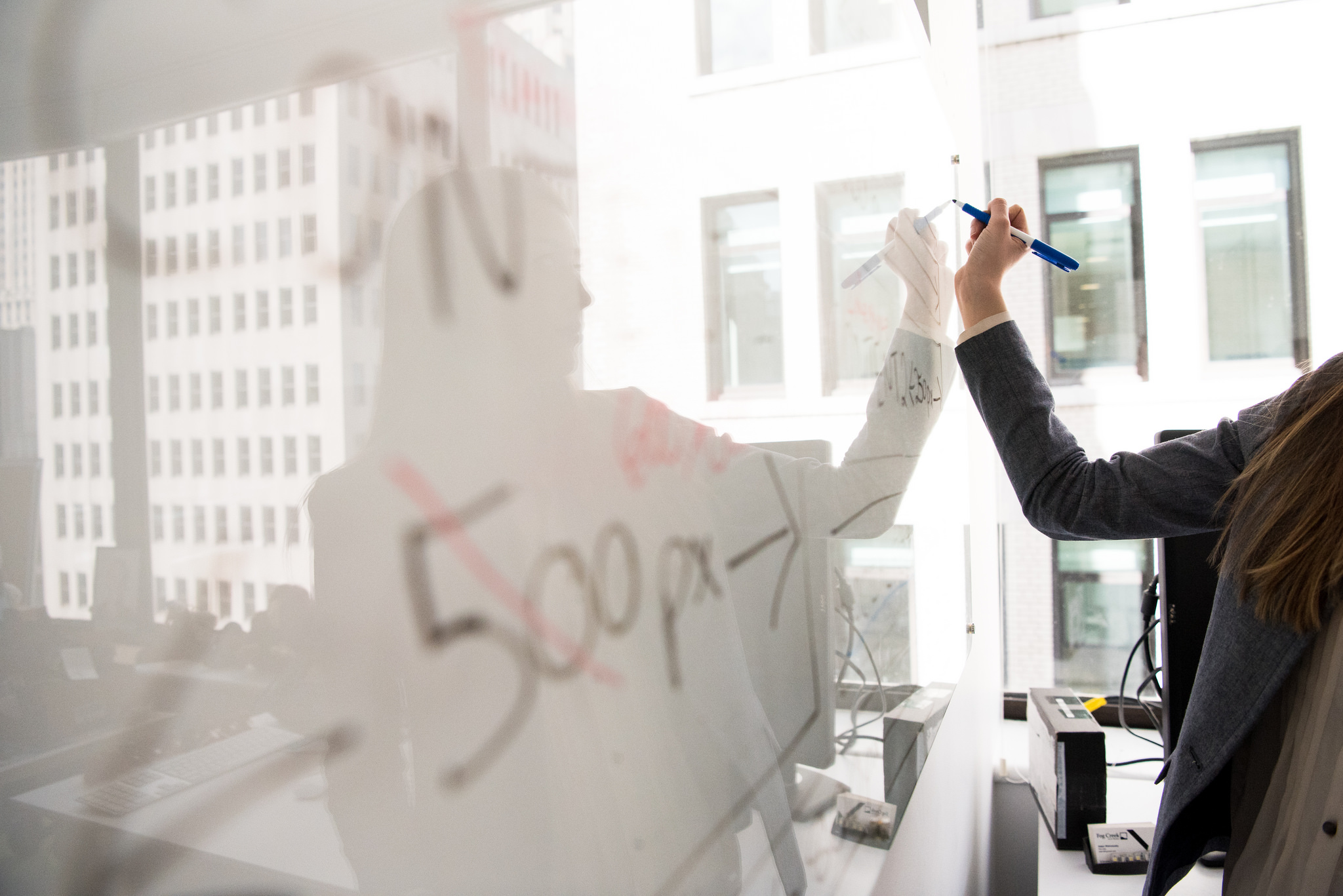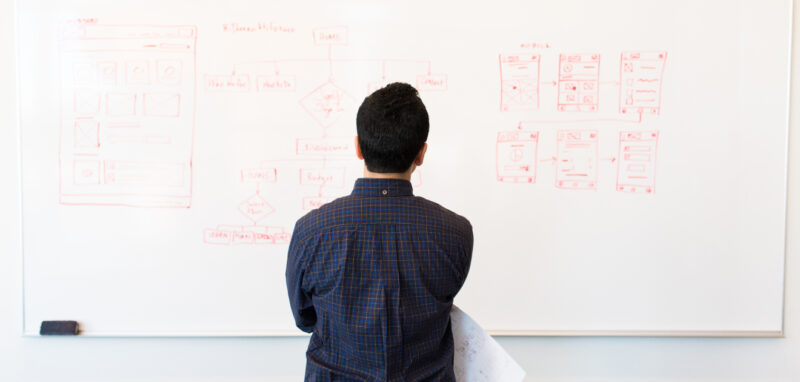
How to Work Remotely as a UX Designer
When we talk about UX Design careers, working from home in comfy pajamas isn’t the first thing that comes to mind. The common perception of a UX Designer is someone embedded in the product team, juggling in-office workshops and face-to-face stakeholder meetings.
It’s true that in-person contact has been key to delivering UX work since the start of this profession. But being office-bound can get in the way of creativity and productivity. According to this PGi report, 82% of remote workers report less stress, while 11-20% report higher productivity when performing creative tasks, according to another Inc. data report. It raises the question: why can’t UX designer work remotely?
I asked myself that question during my UX job hunt 3 years ago. It felt like a risky career move when I turned down in-office job offers. But as I went on to work remotely as a freelance UX designer for the next 3 years, I’m happy to say that I made the right choice. Not only did I deliver high-quality UX work to clients based everywhere, I also managed to find free time to grow my side project.
If you are considering a remote UX Design career, here are my top tips to prepare yourself for UX work without an office. Hopefully, these tips will help you to make a major lifestyle transition with complete faith in a thriving remote career.
Master Remote Design ToolsWhether you are pitching a UX project to a client based out of town or interviewing for a remote UX position, you will likely need to explain your remote work process.
Lucky for us, most UX design tools are remote-friendly. Popular design tools like Sketch and InVision are created by distributed teams. As a result, remote communication and delivery features are already baked into these tools. A decent Laptop is all you need to deliver great UX work.
However, there are parts of the remote UX design process that need to be done with the right tools, such as remote user research. I use Optimal Workshop for remote card sorting and lookback.io for remote usability tests. I’ve written in great detail about my design process here if you are curious.
Test out these tools on personal projects first before using it on “real” projects, so you can understand their limitations and possibilities. That way you will speak about your process with confidence when being quizzed by stakeholders.
Sharpen Your Communication SkillsThe most critical skill that you need to develop to thrive in a remote work setup is effective communication. Milton Glaser, the legendary design behind I ❤ NY, famously said “To design is to communicate clearly by whatever means you can control or master”, and I cannot agree more.
The success of a UX designer depends on how well he/she can communicate design decisions to non-designers. Every step of the process requires expert communication: to get stakeholder buy-in on your plan of action, to tell an engaging story of the user journey, to explain design deliverables in a meaningful way, and to help developers understand interaction patterns and design specifications.
When working remotely, effective communication is more critical than ever due to the absence of in-person interaction. My advice is to never make assumptions about your audience and always over-communicate with more than one mode of communication. When I hand off prototypes, in addition to annotating my designs and using motion to explain interaction patterns, I also record a video walkthrough to make sure that the design is well-understood.
Effectively Manage Time for Deep WorkA key benefit of remote working is a flexible work schedule at your own pace. No designers wish to be micromanaged – it smothers our creativity. But when you’re free to work whenever and wherever you’d like, time management takes incredible self-discipline.
Sure, you can share a minute-by-minute report of your billable with clients, but self-directed time management is not just about transparency. It’s also about effectiveness. At its best, remote work opens up possibilities for uninterrupted deep work, which could lead to personal breakthroughs that 10x your output.
As explained in Cal Newport’s book, deep work means extended periods of time focused on cognitively demanding work distraction-free. This would mean that you need to strategically build your schedule to reduce distractions for deep work. Simple tips that I personally benefited from including Pomodoro technique, batch processing emails twice a day and offline work mode between meetings.
Learn to Solve Problems IndependentlyBack in my corporate office job days, I was following processes and procedures. While life was easy being a rule-abiding employee, I found myself becoming more and more dependent on colleagues when things get tough. Why bother learning how the web banner works when I can just walk over to my work friend over at IT?
Since I started remote working, I had to cultivate the independent streak in me. The day-to-day is less predictable for a remote worker, and there aren’t any coworkers or line managers sitting right around the corner. I learned to embrace the uncertainties at work and tackle problems with resilience and initiative.
This ability to draw on our internal resources to think creatively is called lateral thinking. As a remote worker, I’m left with fewer resources at my disposal and more time for focused thinking, which encourage thinking in alternatives. In my experience as an independent UX designer, the biggest value I bring to lean tech teams is my ability to think outside of the box, often as the sole designer on the team.
The first step to cultivating your lateral thinking skill is to embrace the unknown. Once you are comfortable with a high level of uncertainty, you start to navigate unfiltered information with confidence. Allow your mind to wander and explore. Before long you will be able to connect the dots between seemingly disparate parts.
Practice Self-care to Avoid BurnoutAs a veteran remote worker, I’ve learned the hard way that there is a dark side to remote working. While being in the same office doesn’t necessarily mean emotional closeness, virtual workplaces aren’t exactly where one would find strong personal connections.
I can recall the time when my project team opts for audio calls only, the entire team’s morale drops. Individuals are less engaged, and conflicts are harder to resolve. Without constant human contact, it’s pretty easy to fall into a cycle of isolation and loneliness, which ends up costing our mental and physical health in the long run.
I call on all practicing and soon-to-be remote workers to take extra care of your wellbeing. Take regular breaks from the screen and go for a stretch. Carve out time for simple at-home workouts. And don’t forget about your mental health: initiate human contact as much as you can. Sometimes, a side project can lead to meaningful interactions. I started a wearable tech blog called Digiswitch and it has given me more purpose in life.
Most importantly, try to disconnect from work and be present with the life you are actually living. The always-on mode of remote working can easily blur the lines between work and life. At the end of the day, we work to live and not the other way around.
—
How do you feel about remote working after reading this article? Do you feel excited or intimidated by making a major life change? I hope these tips can help you get clear on what remote work is about and whether or not you are ready for it.
Related blog posts

Is My Job Too Much Work for One Person?
4 Strategies to Address Feeling Overwhelmed at Work Whether you work for a startup or...

Are You Burnt Out (Or Do You Really Just Hate Your Job)?
The difference between the two and what to do about it Your career may be a large part of your...

4 Things Every Engineer Must Do Before A Technical Interview
In order to become an expert on something, mere talent or aptitude is not enough. According to...

Where Do Engineer Salaries Pay the Best (Highest) Standard of Living?
Opportunity shifts from higher cost-of-living markets The rise in remote work prompted...

What Makes You Love Your Job? 6 Crucial Job Happiness Indicators
In a world with increasingly long workweeks and demanding workplace expectations, there’s a...

Salary Negotiation 101: How to Know and Ask For Your Salary Worth
Salary negotiation is a difficult task for everyone. That goes for whether you’re just...

